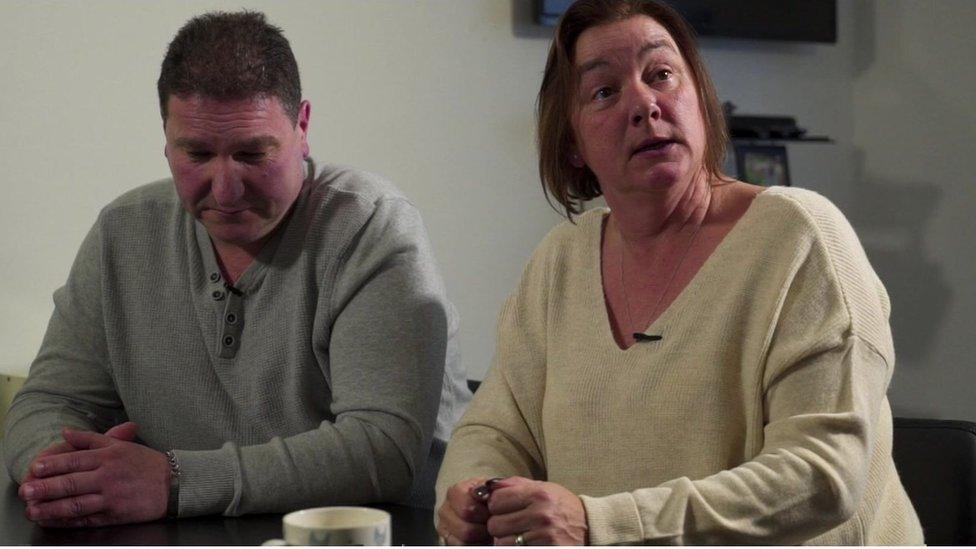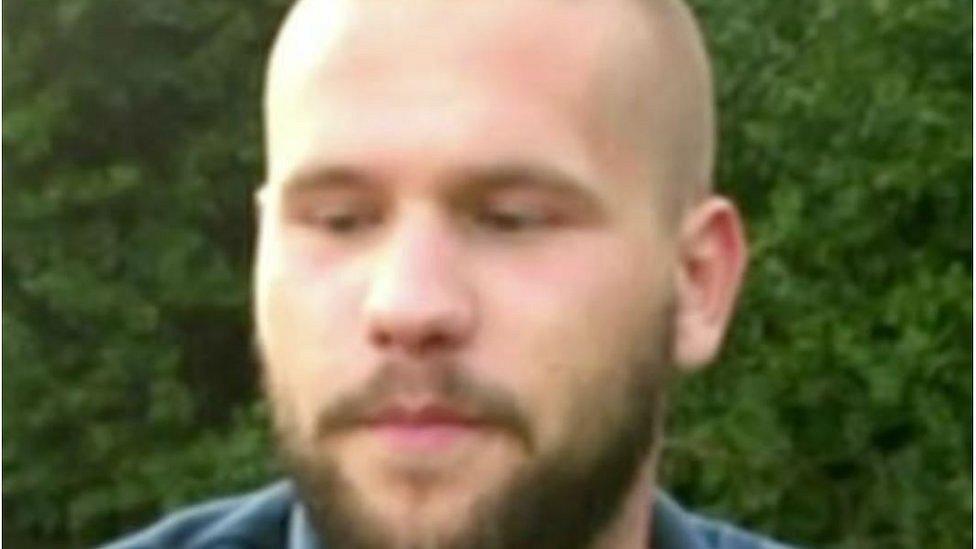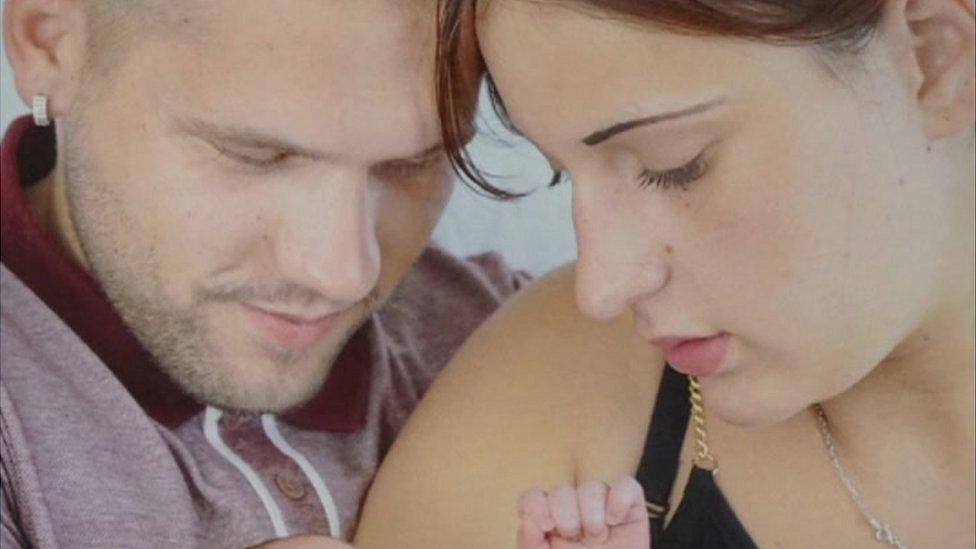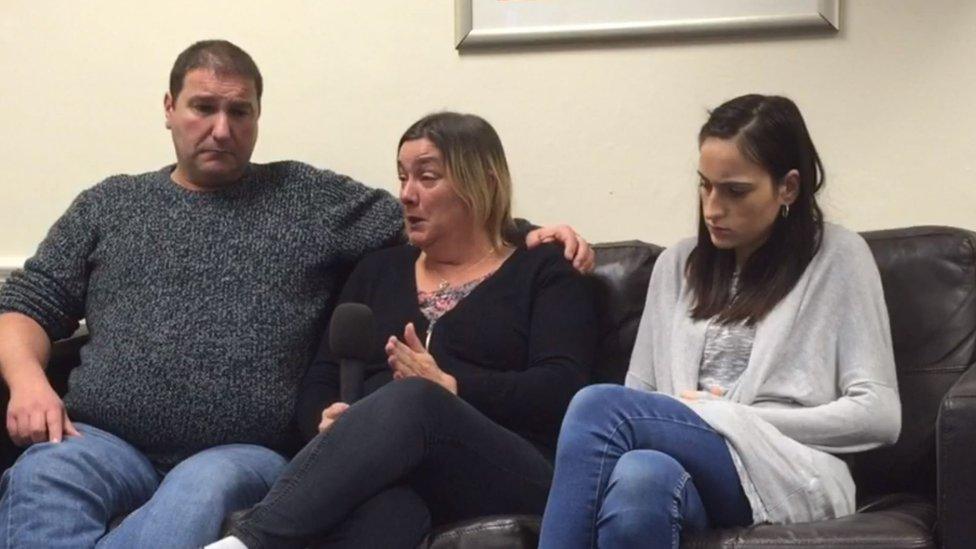Dean Saunders death: Prison ombudsman finds 'weaknesses'
- Published
Dean Saunders' mother: "I told them he would kill himself if he wasn't on constant watch"
The criminal justice system "did too little to protect" a vulnerable inmate who electrocuted himself in prison, the Prisons Ombudsman has found.
Dean Saunders, 25, died at HMP Chelmsford in Essex in January 2016.
He had been arrested the month before, after his father, Mark, was stabbed while trying to stop his son harming himself during a bout of paranoia.
Mark Saunders has called for the recommendations made by the ombudsman to be seen through.
On Friday, an inquest jury found Mr Saunders was "let down" by the prison and mental health services.
Live: For more on this and the latest Essex stories
Nigel Newcomen, the Prisons and Probation Ombudsman, external said Mr Saunders was at "high risk of suicide" when he arrived at Chelmsford and identified "a number of weaknesses" in the prison's handling of his case.

The Saunders family believe their son Dean should not have been in prison in the first place
Mark Saunders, Dean's father, said the family had questioned his placement in prison from the outset.
"Obviously our concerns were that he needed help and medication, we needed to find out what was going on," said Mr Saunders.
"There was no proper medical structure there [in prison] to help him. We were lied to and mislead all the way through. We were devastated."

"Multiple failings" included a "complacent" approach to Dean Saunders' state of mind, the inquest heard
The ombudsman said those involved in Dean Saunders' care felt he should have been in a mental health facility rather than prison.
"I am also concerned that there appears to have been some confusion at Chelmsford about the process for transferring mentally ill prisoners to hospital, which meant that an opportunity to transfer Mr Saunders in December [of 2015] was missed.
"Sadly, the criminal justice system did too little to protect this very vulnerable man."
Speaking about the report, Mark Saunders said: "I can't walk away from this now without putting all the changes into place."
Care UK, the healthcare provider at HMP Chelmsford, announced it was to quit its contract at the prison.
The company said it had attempted to resolve issues at Chelmsford Prison but the level of resources the prison planned to make available were "insufficient".

The Dean Saunders case

15 December 2015: Dean is taken to Rochford Hospital after concerns for his mental health are raised. He is later released into care of family
16 December: Dean's father sinks himself onto a knife held by his son in order to prevent him harming himself
17 December: Assessed by G4S, Dean shows signs of paranoia and speaks of killing himself
17 December: No medium secure mental health beds available anywhere in Essex for Dean
18 December: Appears in court accused of attempted murder and is remanded in custody
21 December: Dean taken off constant watch and placed on half-hourly watch
22 December: Prison governor records he was aware of concerns that decisions about constant watch were being made on grounds of costs
28 December: Dean's risk recorded as "high"
31 December: A medium secure unit bed becomes available and one doctor signs the forms for Dean to be sectioned
2 January 2016: Dean asked for the television (used to kill himself) to be removed from his room. It is removed
3 January: Television returned to the room
3 January: Dean asks to speak to the prison chaplain about "funeral plans" saying: "It is never too early." He also asked for a solicitor to arrange a lethal injection to "speed things up"
4 January: Dean is found dead in his cell
5 January: Second psychiatrist - who was on leave - expected to sign paperwork for Dean to be sectioned into a secure unit

The Ministry of Justice said after the inquest that it accepted there were "significant failings" in Mr Saunders' care.
It added "a number of measures to better support offenders suffering from mental health problems" had already been put in place.
- Published20 January 2017

- Published16 January 2017

- Published10 January 2017

- Published11 January 2017
